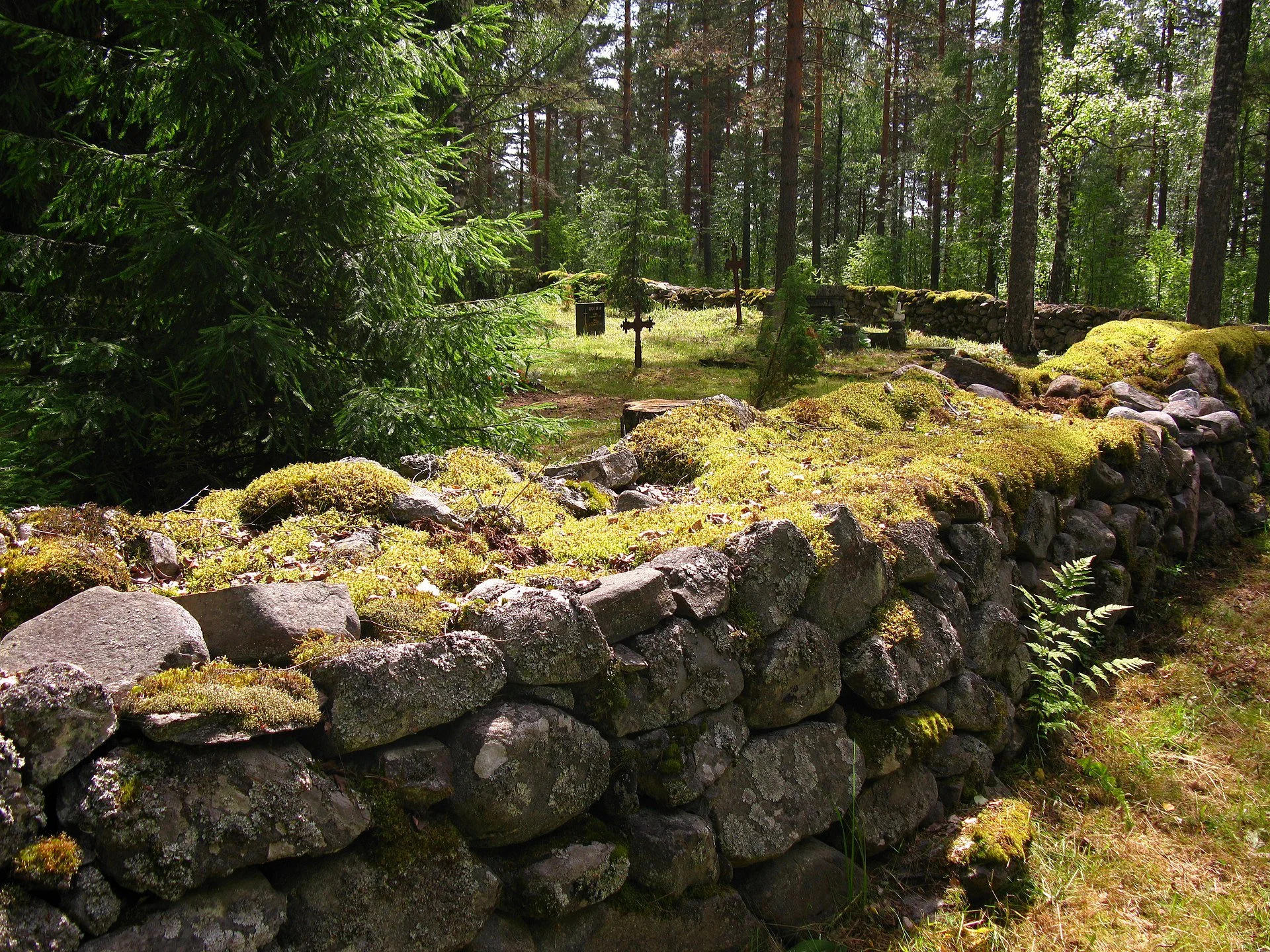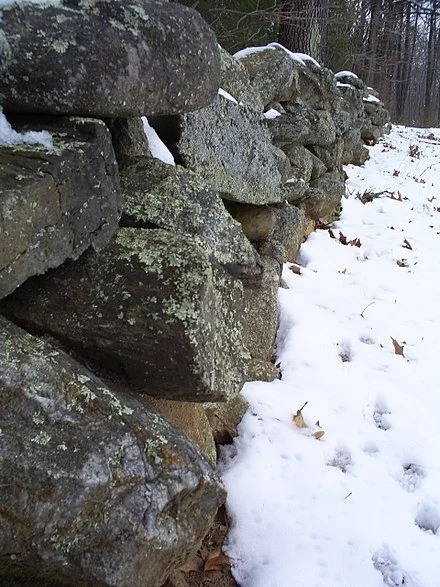
New England stone walls house many creatures
Excerpted/edited from an ecoRI News article by Colleen Cronin
LITTLE COMPTON, R.I.
A look at a stone wall on Roger and Gail Greene’s property — they guessed the structure dates back to the early 1800s or even late 1700s — suggests that every rock and cranny is a world unto its own.
A black cherry tree stretched its way up and out from underneath — a gift likely planted by a bird who had perched on its stones decades ago, Roger said. Minty green lichen made splotches on gray rocks. A pickerel frog with skin like a snake hopped its way through leaf litter and low grasses to a hiding space before an ecoRI News reporter could get a good photo.
Stone walls originally marked the boundaries of farms, but now they have become homes to many different types of creatures.
Symbols of New England
The stone wall at the farm in Derry, N.H., where Robert Frost lived with his family in 1901-1911. He described the wall in his famous and complex poem "Mending Wall".
Stone wall in Maine
From the New England Historical Society:
“New England stone walls are as distinctive a feature of the landscape as bayous in Louisiana or redwoods in California. Hundreds of thousands of miles of them criss-cross the region like so much grillwork.’
Hit this link to read the article “Seven Fun Facts About New England’s Stone Walls.
Mapping stone walls from above
Stone wall at what had been Robert Frost's farm in Derry, N.H., a wall he describes in his famous poem "Mending Wall".
From Robert Whitcomb’s “Digital Diary,’’ in GoLocal24.com
The Concord (N.H.) Monitor ran an intriguing story on Jan. 15 headlined “Crowdsourcing New Hampshire’s love affair with stone walls’’. Stone walls, built mostly by English colonists and their descendants, most of them farmers, from the 17th to the early 19 centuries, are one of our region’s most beloved features – and a reminder of how hard earlier New Englanders had to work to wrest a living from a rocky soil.
The Monitor’s David Brooks reports how an aerial mapping system called LIDAR has eased the mapping old stone walls, many hidden in woods that have long since enveloped open fields. “The state has uploaded a zoomable image of most of New Hampshire taken by airplanes using LIDAR, which operates like sonar but uses light waves and produces a more detailed image,’’ even from a mile in the air.
“Members of the public can search through the black-and-white image and if they find what appears to be a stone wall, notable for unnatural straightness amid meandering hills or streams, they can mark it with a drawing tool that creates a thin pink line. These lines will create a map and database of the state’s stone walls. The online map includes a ‘progress to date’ link keeping a running tally of how many miles of walls have been marked.”
The project could improve our understanding of land-use patterns that developed since Europeans started to move en masse into New England. It’s always useful to know where we’ve been, which can help tell us where we’re going.
To read Mr. Brooks’s story, please hit this link.
Stop the theft from stone walls
By TIM FAULKNER for ecoRI News
Via ecori.org
PROVIDENCE
Preserved open space in Rhode Island needs additional protections, because poachers steal rocks from stone walls and nearby residents cut down trees to improve their views.
Currently, there is no deterrent or penalty for intentionally damaging or building on land protected from development. If caught, the thief or vandal simply has to pay a portion of the value of the damaged or stolen items, such as the timber value of a cut tree.
Rupert Friday, director of the Rhode Island Land Trust Council, testified at the Rhode Island General Assembly on Jan. 18 in favor of a bill that would make such offenses a civil violation.
“The current penalties are little more than a hand slap,” Friday said. “The current penalty if you steal a stone wall and you get caught and convicted is you have to put the stone wall back. It’s pretty lucrative if you don’t get caught.”
Meg Kerr, senior director of policy for the Audubon Society of Rhode Island, said such legislation would help protect 9,500 acres of open space and wildlife habitat that Audubon owns and manages. Kerr said it’s common for landowners living near protected coastal areas to cut down trees on protected land to improve their views of the water.
“This legislation will provide a greater deterrence and keep people from blatantly damaging our communities’ open space and our significant investment to protect these special place,” Kerr said in testimony before the House Judiciary Committee.
The bill was held for further study and will likely have another hearing on Jan. 24. It's the third year in a row that the bill has been introduced. Last year, the bill passed in the House but stalled in the Senate.
The bill is modeled after a bill passed in Connecticut in 2006 that was intended to address the same problems faced by land trusts, municipalities, the state, environmental groups, and other owners and managers of open space.
In the legislation, open space is defined as any park, forest, wildlife management area, refuge, preserve, sanctuary or green area owned by one of those entities. Damage, called encroachment, is defined as intentionally erecting structures, roads, driveways or trails. It includes destroying or moving walls, cutting trees and vegetation, removing boundary markers, installing lawns or utilities, and storing vehicles, materials and debris.
The civil fine for a violation could amount to five times the cost of the damage up to $5,000.
The bill is sponsored by Rep. Cale Keable (D.-Burrillville).





